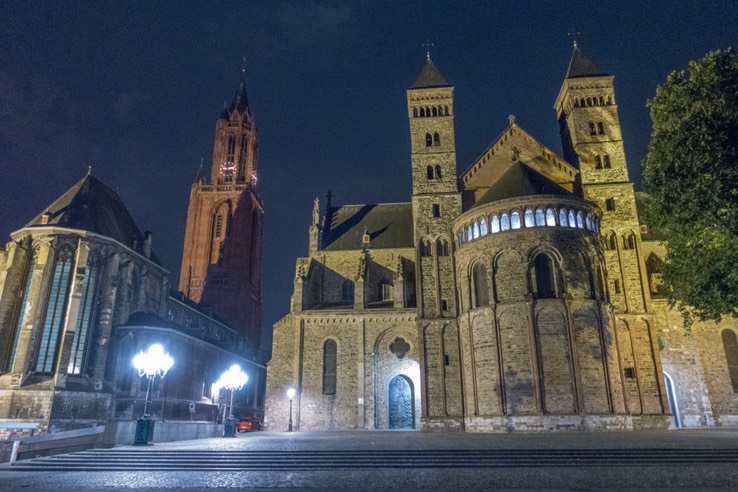From the Meuse into the Albert Canal and back to the Dutch “Maas” (that’s what the Meuse is called here) there are four 15m high locks. We were in the queue for lock Nr. 3 and when we got the green light got ready to untie from the waiting pontoon. But to our horror the motor wouldn’t start! In the meantime due to an Indian summer in Europe it was boiling hot on deck and more commercial barges were hovering around. Luckily Captain Aussie found a loose contact and had it fixed in no time. 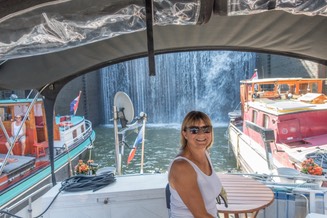 We squeezed into the lock with two giant commercial and two 15 m Dutch barges and we were off!
We squeezed into the lock with two giant commercial and two 15 m Dutch barges and we were off! 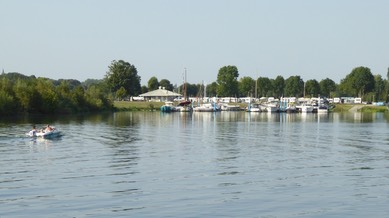 Our destination was the yacht harbour “Pietersplas” South of Maastricht. From here it is only a 4km cycle to the town centre. As we love the town of Maastricht we decided to stay for 4 days. We felt almost like locals cycling to and fro each day. Parking wasn’t a problem, the only worry was if we would find our bikes again among all the others at the end of the day.
Our destination was the yacht harbour “Pietersplas” South of Maastricht. From here it is only a 4km cycle to the town centre. As we love the town of Maastricht we decided to stay for 4 days. We felt almost like locals cycling to and fro each day. Parking wasn’t a problem, the only worry was if we would find our bikes again among all the others at the end of the day.
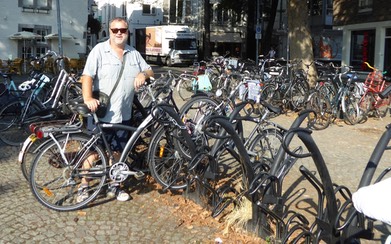
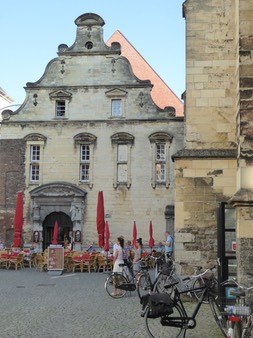 Like last year we were taken in by the friendly atmosphere, the beautiful houses and interesting shops. I loved the bookshop in the former Dominican church! Walking along the clean cobblestone streets and lanes was a joy.
Like last year we were taken in by the friendly atmosphere, the beautiful houses and interesting shops. I loved the bookshop in the former Dominican church! Walking along the clean cobblestone streets and lanes was a joy.
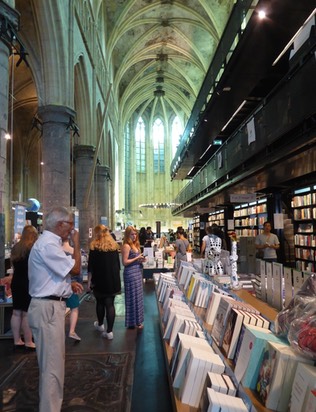 No need to watch one’s step to avoid dogs poo or piles of cigarette buds and rubbish like in some French and Belgian cities.
No need to watch one’s step to avoid dogs poo or piles of cigarette buds and rubbish like in some French and Belgian cities.
Under shady trees we enjoyed a good cappuccino in the Square in front of Maastricht’s oldest church, the Basilica of Our Lady.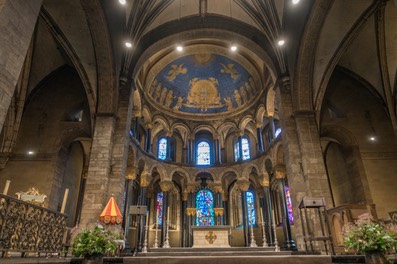
A tourist walk leads from there to the old town wall. The most striking part of the wall is the “Helpoort”, the Hell Gate. 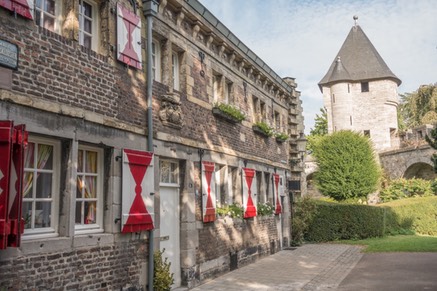
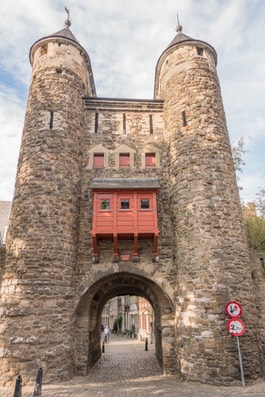
After a sandwich in a small student cafe near the university, we decided to take the ferry to the limestone caves on Zonneberg.
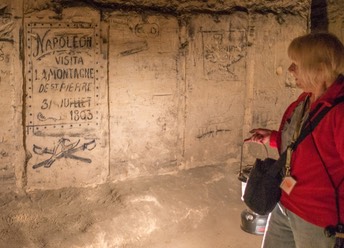
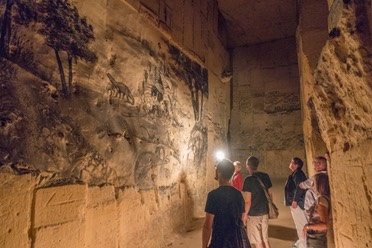 These caves are man made subterranean tunnels created by the excavation of limestone dating back to the arrival of the Romans. The Romans called their settlement “Trajectum ad Mosam”, (later becoming “Maastricht”) “crossing of the Maas". In those times the river wasn’t canalised and it was shallow enough to walk across. Big blocks of limestone continued to be quarried for building purposes until the manufacturing of bricks made the process uneconomical. The caves became quite famous and were even visited by Napoleon in 1803 as a commemorate inscription proves. In the second world war they were set up as an evacuation centre for 44000 people with a bakery and two churches. In the end the evacuation did not have to go ahead. However, during war times the 200km caves were used by many as an escape route to Belgium.
These caves are man made subterranean tunnels created by the excavation of limestone dating back to the arrival of the Romans. The Romans called their settlement “Trajectum ad Mosam”, (later becoming “Maastricht”) “crossing of the Maas". In those times the river wasn’t canalised and it was shallow enough to walk across. Big blocks of limestone continued to be quarried for building purposes until the manufacturing of bricks made the process uneconomical. The caves became quite famous and were even visited by Napoleon in 1803 as a commemorate inscription proves. In the second world war they were set up as an evacuation centre for 44000 people with a bakery and two churches. In the end the evacuation did not have to go ahead. However, during war times the 200km caves were used by many as an escape route to Belgium.
